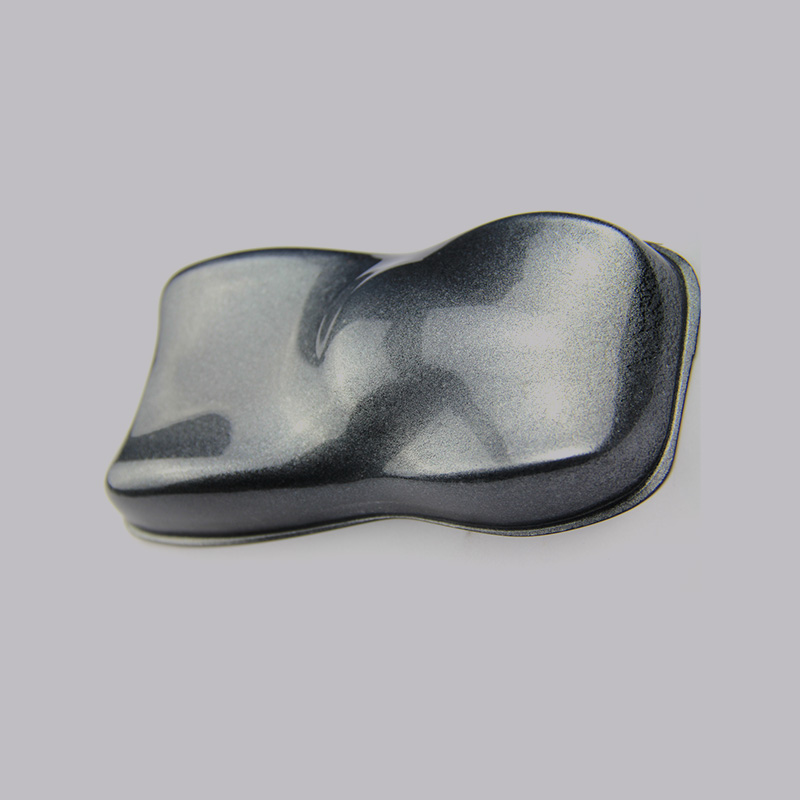Functional pearlescent pigments create their unique visual effects—such as shimmer, luster, and iridescence—through the interaction of light with their multi-layered structures. These effects result from complex optical phenomena, including reflection, refraction, diffraction, and interference of light waves. The design, composition, and layering of these pigments play a crucial role in determining the final visual effects. Here’s a breakdown of how these pigments achieve their distinct appearance:
Layered Structure and Light Interference:Pearlescent pigments consist of thin, flat platelets, typically made from natural or synthetic substrates like mica, glass flakes, or aluminum oxide, coated with layers of metal oxides such as titanium dioxide (TiO₂) or iron oxide (Fe₂O₃).The multilayer structure of these pigments causes light to reflect off the different layers at varying depths. When light hits the surface, part of it reflects off the top layer, while other parts penetrate deeper and reflect off lower layers.The overlapping of these reflected light waves creates constructive and destructive interference. Constructive interference amplifies certain wavelengths of light, resulting in vivid, shimmering colors, while destructive interference cancels out other wavelengths.
Refraction and Reflection:When light enters the pearlescent pigment, it refracts (bends) due to the change in medium (from air to the pigment layer) and reflects off the smooth, layered surfaces. This interaction generates a pearly or metallic luster.The degree of reflection and refraction depends on the refractive indices of the pigment’s substrate and coating materials. High-refractive-index materials like titanium dioxide produce more intense and brighter pearlescent effects.

Transparency and Semi-Transparency:Pearlescent pigments are often semi-transparent or transparent. This property allows light to pass through multiple layers before being reflected, contributing to depth and multi-dimensional effects.The transparency level of the substrate (e.g., natural mica vs. synthetic mica vs. glass flake) affects the final appearance. For example, pigments with more transparent substrates allow for stronger color saturation and richer visual effects.Particle Size and Shape:The particle size and shape of pearlescent pigments significantly affect their visual effects:
Fine Particles (5-15 microns): These create soft, satin-like effects and subtle luster, often used in cosmetic formulations for a natural glow.Medium Particles (15-60 microns): These offer a balance between shimmer and smoothness, providing moderate sparkle and color intensity.Large Particles (60-200 microns): These generate high sparkle and glitter-like effects, commonly used in automotive paints, decorative coatings, and high-impact cosmetic products.Flatter and more uniform particle shapes produce more consistent and reflective surfaces, enhancing the pigment's shimmer and luster.
Color Travel and Angle Dependency:Pearlescent pigments exhibit angle-dependent color shifts, known as "color travel." The observed color changes based on the viewing angle and the light source direction.This effect is due to the different path lengths that light waves travel within the layered pigment structure. As the viewing angle changes, the interference patterns shift, resulting in dynamic, multi-color effects.
Coating Thickness and Layer Composition:The thickness of the metal oxide coating on the substrate determines the color and intensity of the pearlescent effect. Thicker coatings result in different interference colors:Thin Layers (50-100 nm): Produce silvery-white, soft, or subtle pearlescent effects.Medium Layers (100-200 nm): Create strong interference colors like gold, red, or green.Thick Layers (200-500 nm): Lead to deeper, more saturated colors, including blues, purples, and greens.Multi-layered coatings (e.g., alternating layers of titanium dioxide and iron oxide) can further enhance chromatic effects, creating richer and more complex visual phenomena.
Functional pearlescent pigments achieve their unique visual effects through a combination of physical and optical mechanisms such as interference, reflection, refraction, and diffraction. The specific effects are influenced by factors like particle size, shape, substrate type, coating thickness, and material composition. By adjusting these factors, manufacturers can create a wide range of effects tailored to various applications, from subtle elegance in cosmetics to bold, eye-catching finishes in automotive coatings.

